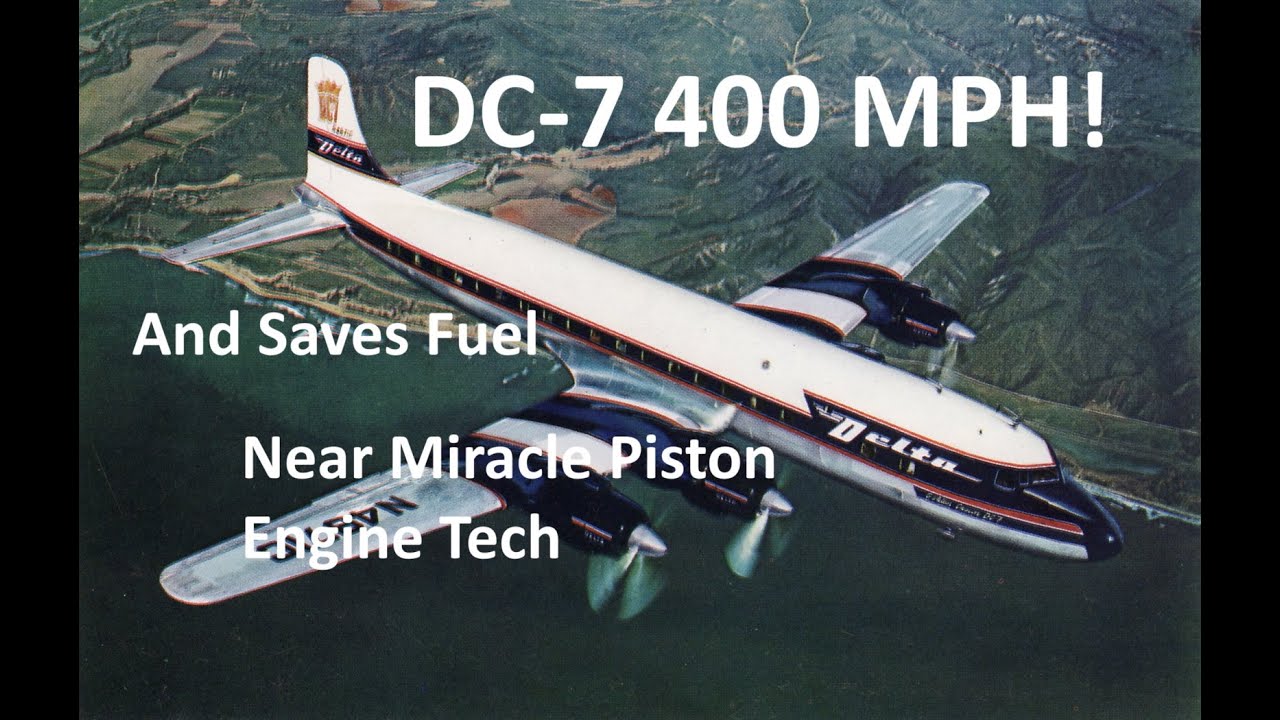With the benefit of hindsight, the piston engine post-WWII was clearly “on the way out” for medium and large scale aircraft use, as it was replaced by the gas turbine turbojet or turboprop.
Still, there were some pretty wondrous post-WWII piston engines that continued to refine and tweak what could be achieved. My own biases w.r.t. what “improvement” means tends towards increased thermal efficiency (reduced fuel consumption) or decreased weight or size per unit of power.
The R3350 with a power recovery turbine is such a wonderful idea; I find it a shame that in actual practice it was found to have been a maintenance nightmare. All that high quality (high temperature) energy in the exhaust gas stream… though too diffuse to economically recover with additional piston stages for expansion. But a turbine is a better “impedance match” to the pressure ratios and temperatures involved. Hence my admiration for the concept.
If you liked the R3350… have a look at the Napier Nomad, which is an aero-diesel approach to the same idea. I believe the Nomad achieved the best specific fuel consumption (amount of fuel burned per unit of shaft energy delivered) of any aero engine ever. In units John will surely abhor, I recall that it was 0.36 lbs/bhp-hr 
Diesel engines can run higher compression ratios than gasoline engines, so they can have higher thermal efficiency; however the high strength required for the high compression ratios means that its not economically/weight feasible to use pistons to do as much expansion as you’d otherwise like (poor impedance match). BUT, all aero engines benefit from turbocharging and diesels even moreso (they need it more, and can also take it more because they don’t have detonation problems that a spark ignition engine has)… so it’s a wonderful synergy to extend a highly-turbocharged diesel even further, which is to say, have a power-extracting turbine (to add power to the propshaft) in addition to the turbine that drives the inlet turbocompressor. An ideal gasoline or diesel engine should, in an economically achievable manner (both $$$ economically and weightwise + sizewise economically) extract all usable energy from the exhaust stream, discharging hot exhaust gas at local atmospheric pressure (though for stationary use you can add a vapour cycle to that). A turbocompound engine does a pretty good job of that.
Another engine from that era that completely charms me is the Napier Deltic, a highly turbocharged two-stroke diesel for locomotive use. Two-stroke for gasoline engine engines typically implies high power to weight ratios but PITA lubrication issues and poor fuel economy (because you are invariably trading off scavenging cs. fuel loss). But two stroke diesels suffer much fewer losses (as you strive to increase scavenging it only costs you intake air and its compression energy, not fuel/air mixture) and are often associated with engines that strive to achieve maximum possible fuel economy, while at the same time taking the benefit of twice the number of power strokes per crankshaft rotation.
The Deltic used opposed piston pairs, allowing it to eliminate intake and exhaust poppet valves, instead using static port openings (and the opposed pistons enabled the exhaust port timing to be different from the intake port!). The Wikipedia pictures don’t show how the three crankshaft axes on the outer dimensions of the engines are joined to a single output but I seem to recall a central gear being driven by them.
To get higher power output from an engine for a given weight, you need to turn it faster. But you start to encounter flow losses in the intake and exhaust system… so sleeve valves or chamber ports potentially allow you better high-speed breathing than poppet valves.
Higher piston speeds run into limits from combustion speed especially in a diesel… but an opposed piston design allows you to double your speed or halve your problem (depending on which way you look at it).
The Deltic had its (limited) day as a locomotive and ship engine, and a planned turbocompound version was never built… but I have to say that I am intrigued and tempted to consider a turbocompound deltic as an aircraft powerplant concept.
Nearly all shaft-power applications (aircraft, train, ship, road) need output power at a lower RPM than crank speed, which means reduction gearing somewhere. Thinking from an aircraft perspective, you want to minimize weight of course but also avoid increasing frontal area or overall length if at all possible… I love that the Deltic’s crankshaft outputs are at the periphery of where you would put a larger central driven gear.
